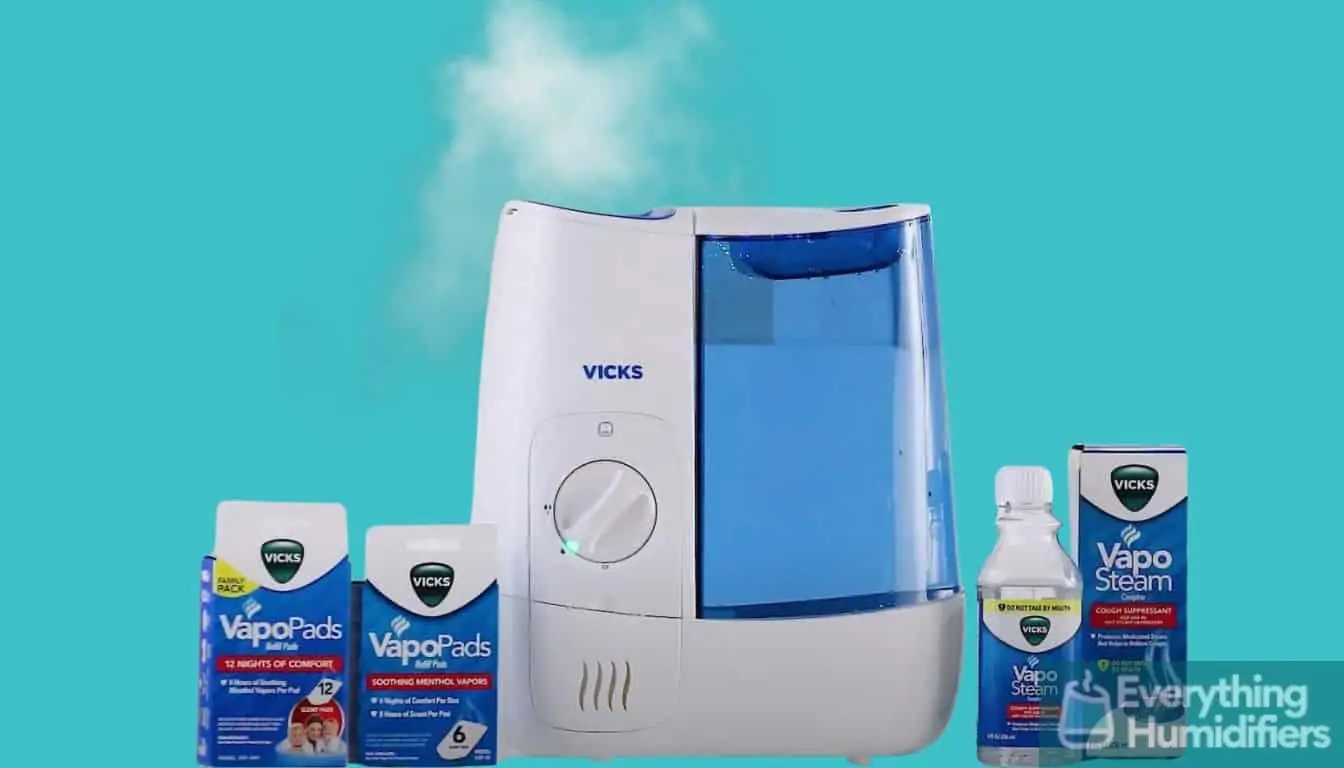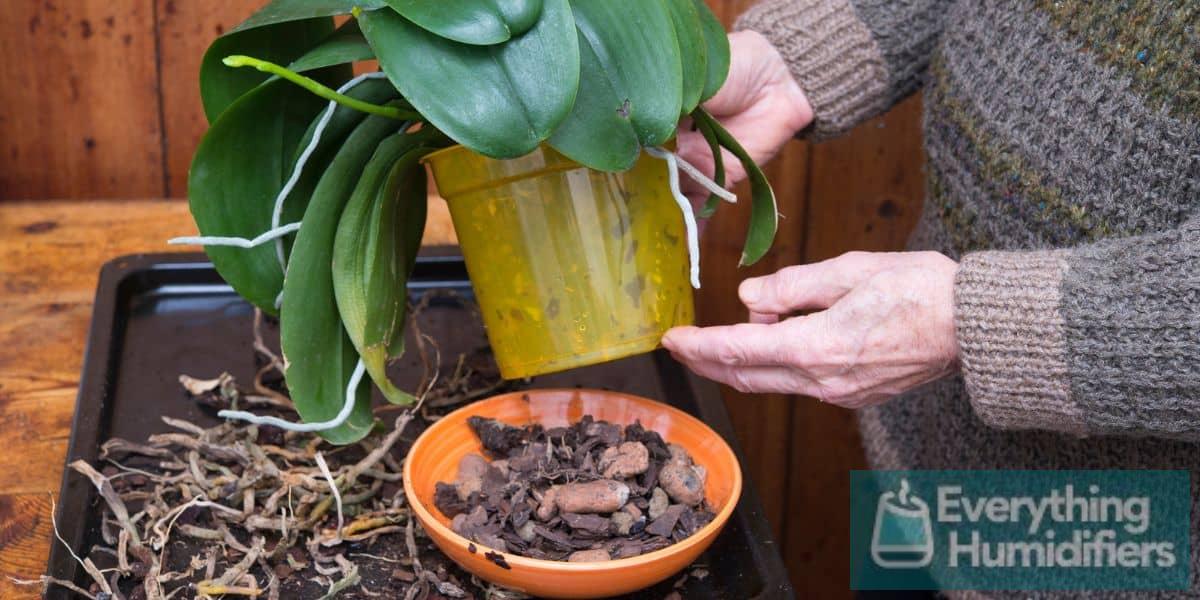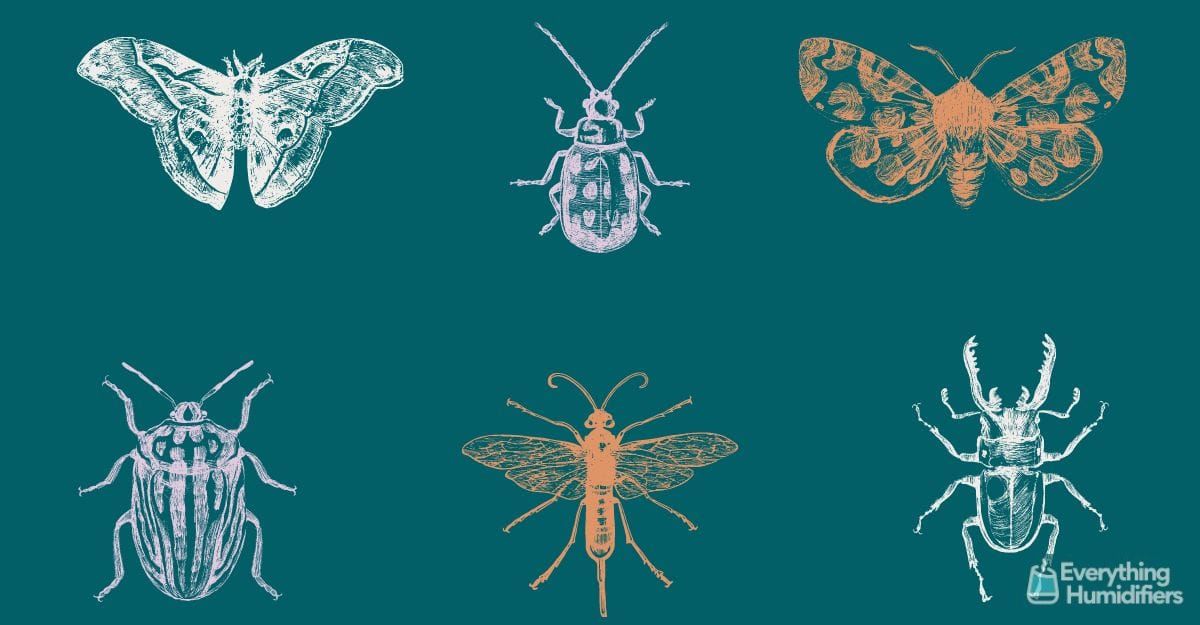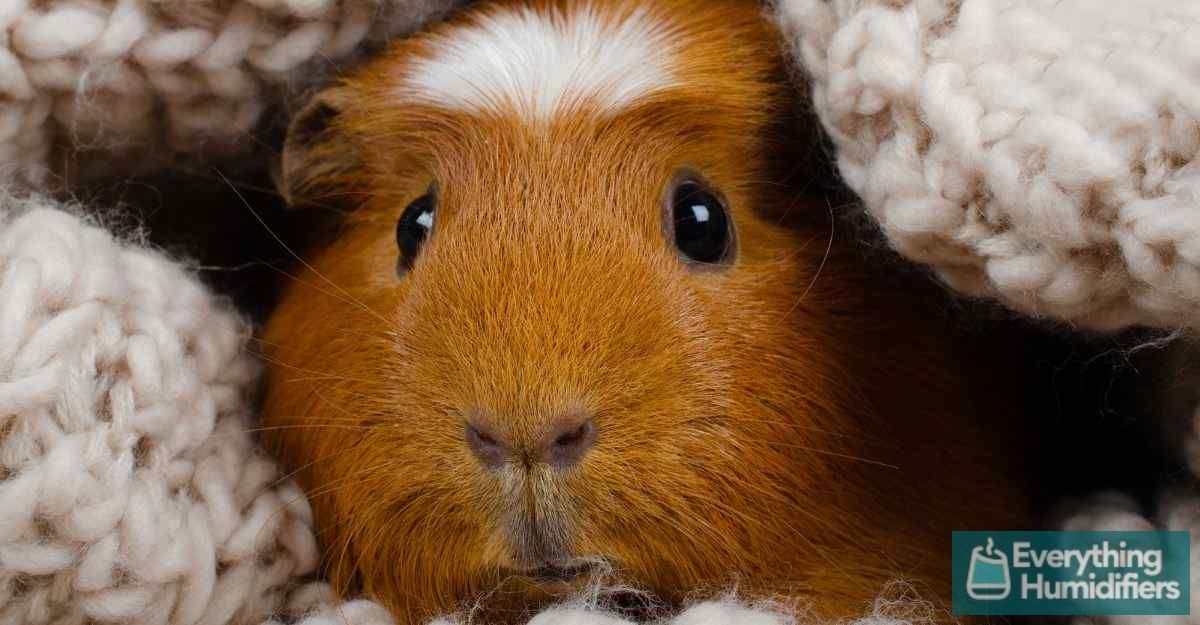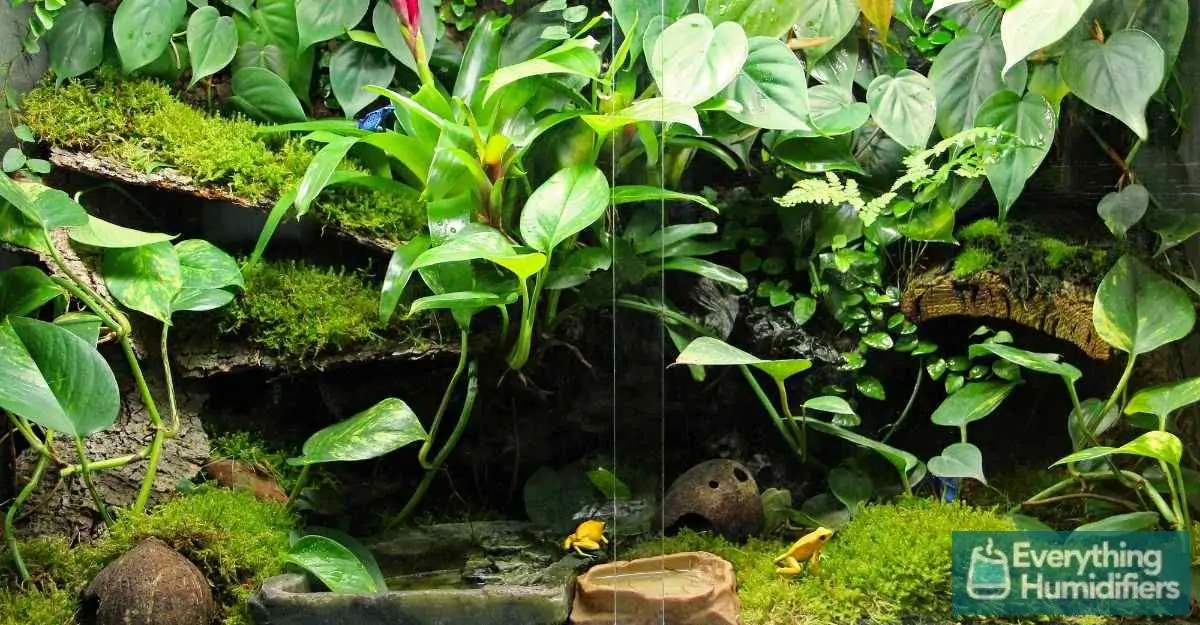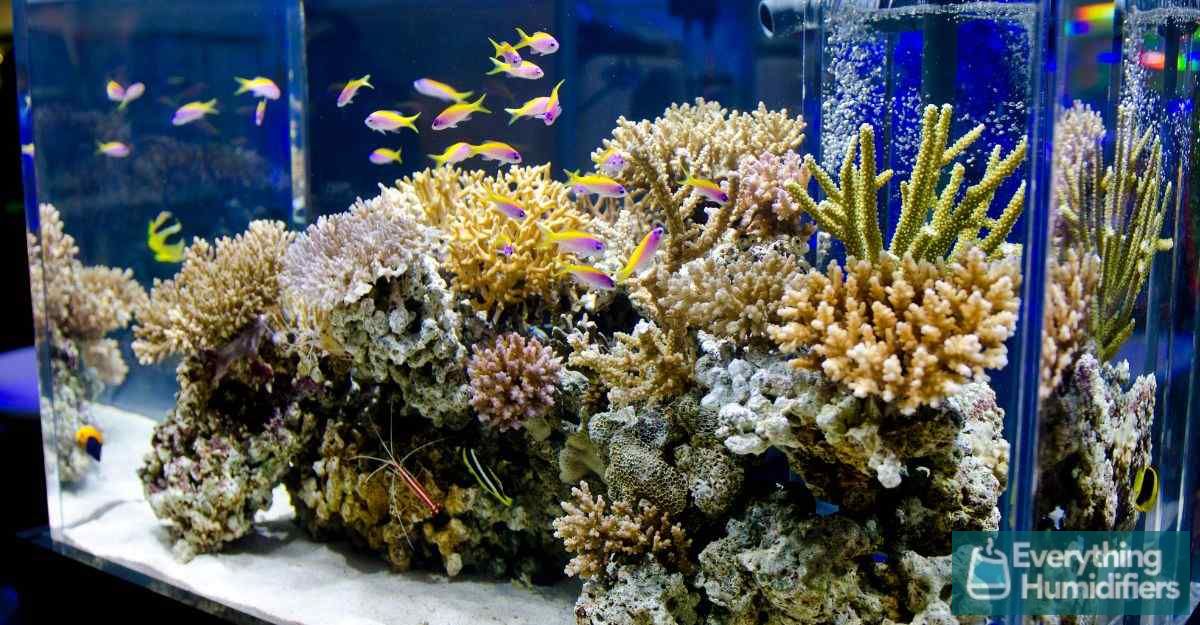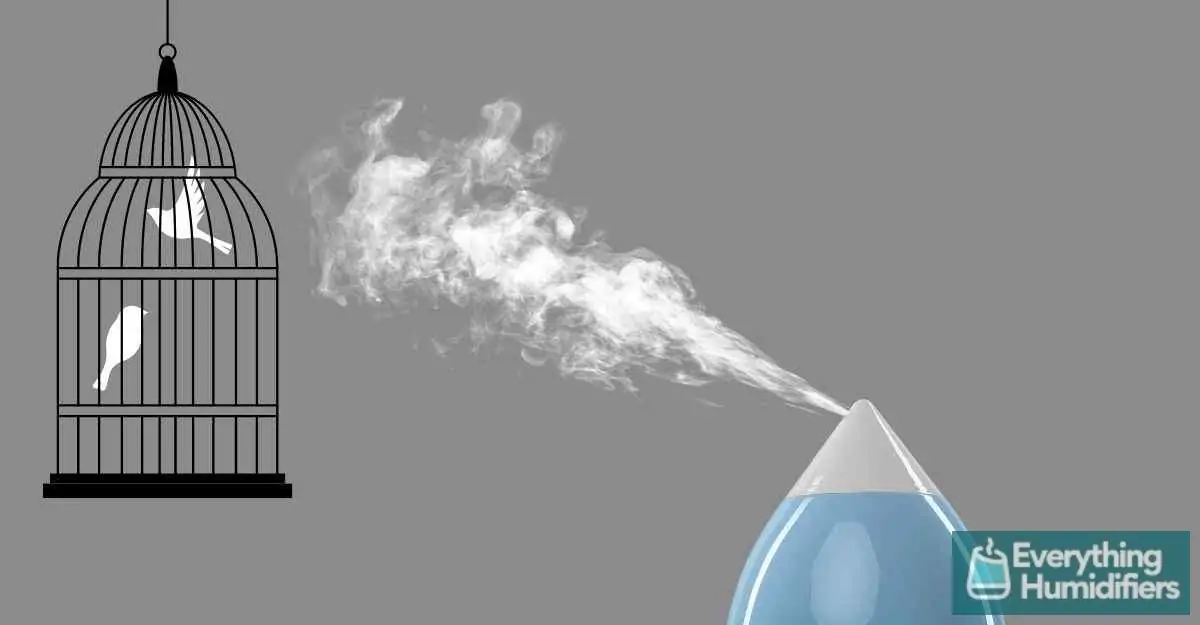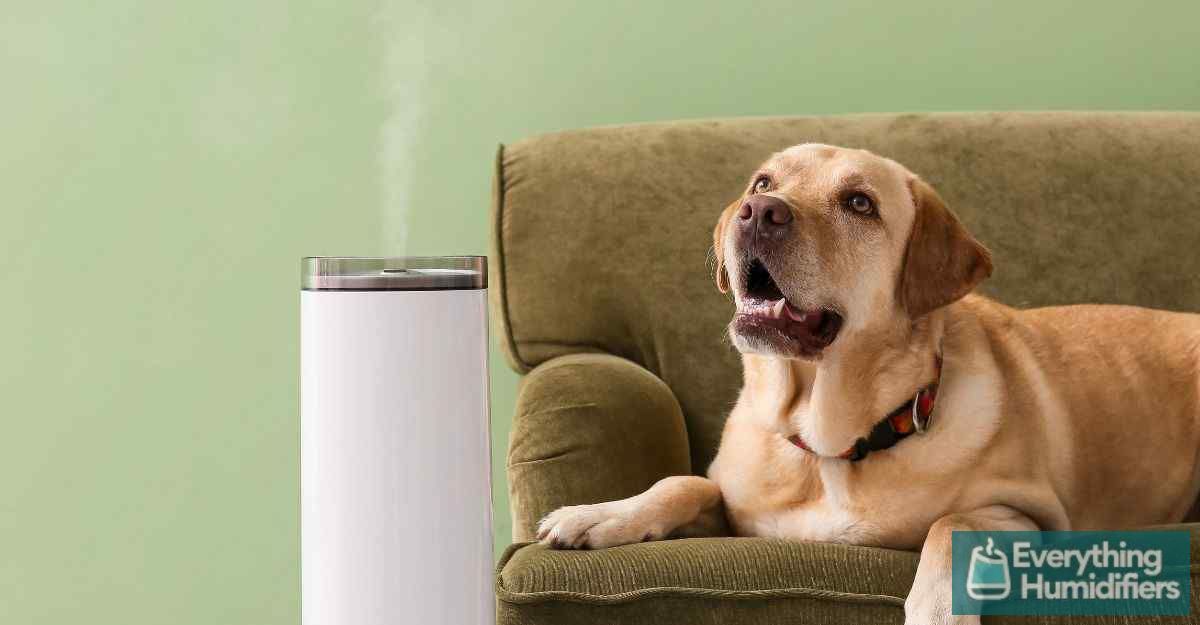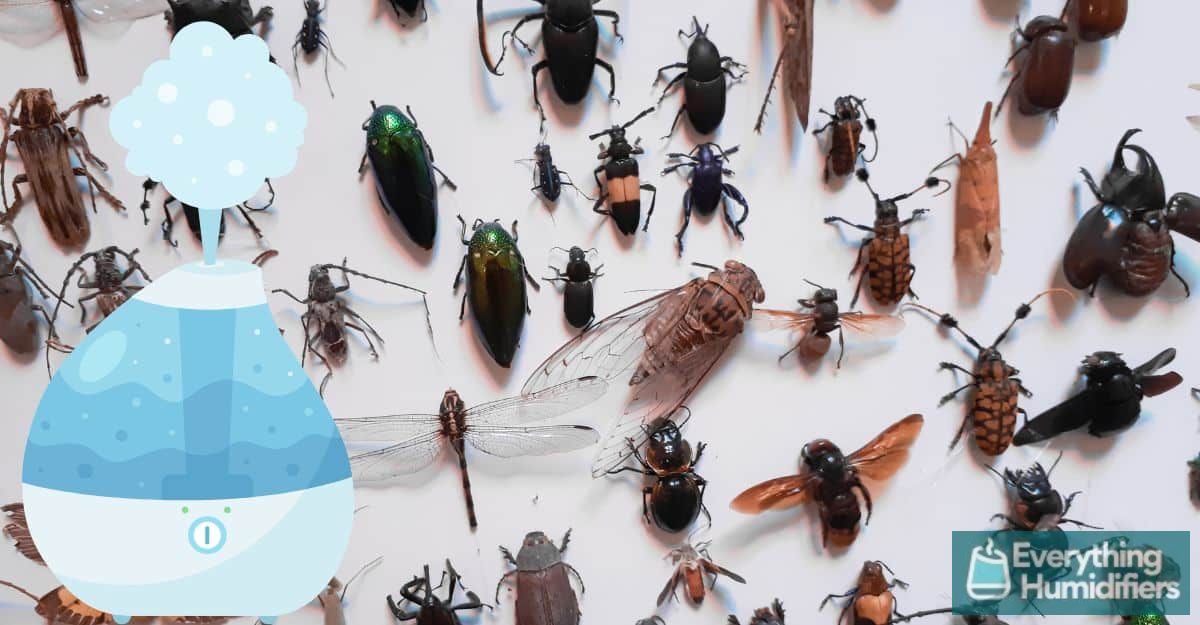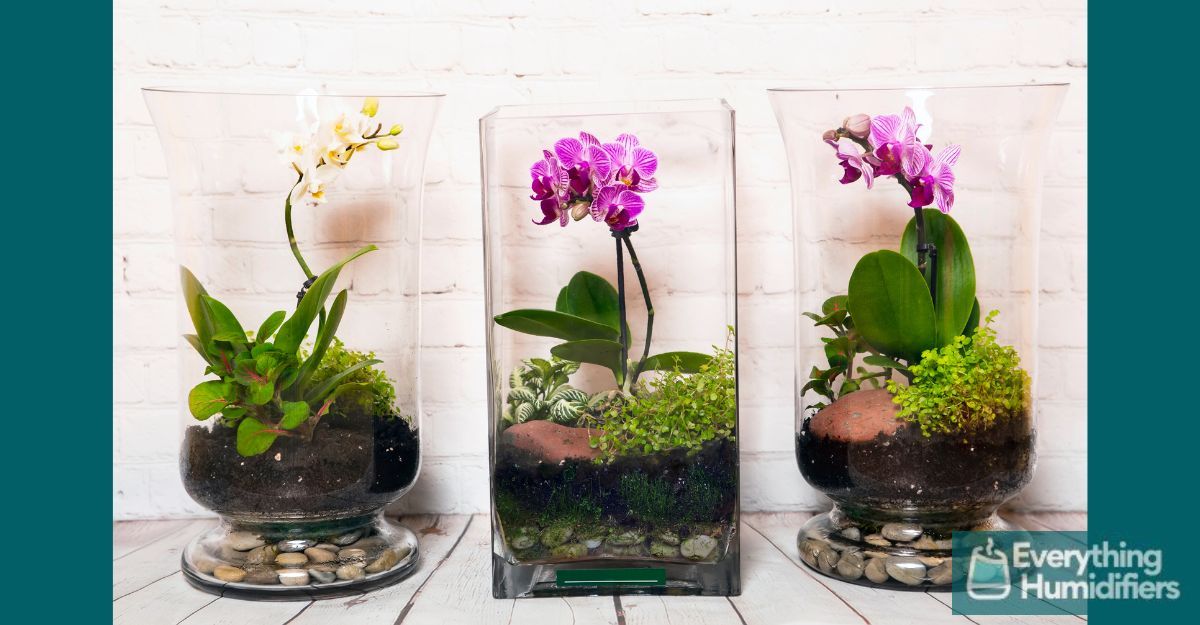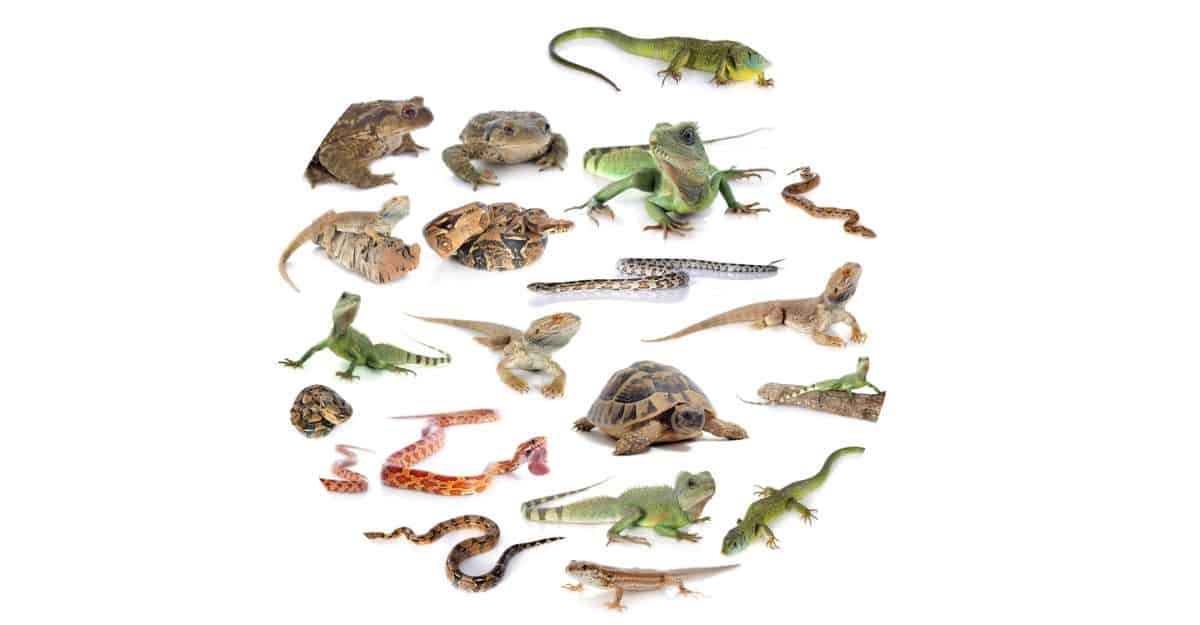Insects are fascinating creatures, they come in all shapes and sizes, with some even enjoying specific environmental conditions.
One such factor that significantly affects insects is humidity. Humidity is the amount of moisture in the air, and it plays a crucial role in the behavior and survival of various insects.
High humidity levels are essential for certain insects’ growth and development.
Insects like mosquitoes, termites, and cockroaches thrive in humid environments because it helps with egg-hatching, maintaining moisture in their bodies, and molting.
Additionally, high humidity levels create ideal conditions for the growth of fungi and other microorganisms that some insects rely on for nutrition, such as certain species of ants.
This article will explore how humidity affects insects and the types of insects that thrive in humid environments.
Table of Contents
The distinction between relative humidity and excessive moisture that promotes pest infestations
Relative humidity – the amount of moisture present in the air in comparison to the maximum amount that the air can hold at a given temperature.
Excessive moisture, however, refers to an abnormally high environmental moisture level.
While high levels of relative humidity can create a favorable environment for pests, excessive moisture takes it a step further by providing the ideal conditions for pest infestations to thrive.
A lot of moisture can lead to mold growth, decay in wooden structures, and standing water, all of which attract pests such as termites, roaches, and mosquitoes.
Controlling relative humidity and excessive moisture is essential in preventing and managing pest infestations. Knowing this, my next thought was, do humidifiers attract bugs? See the link at the end of the page to explore more.
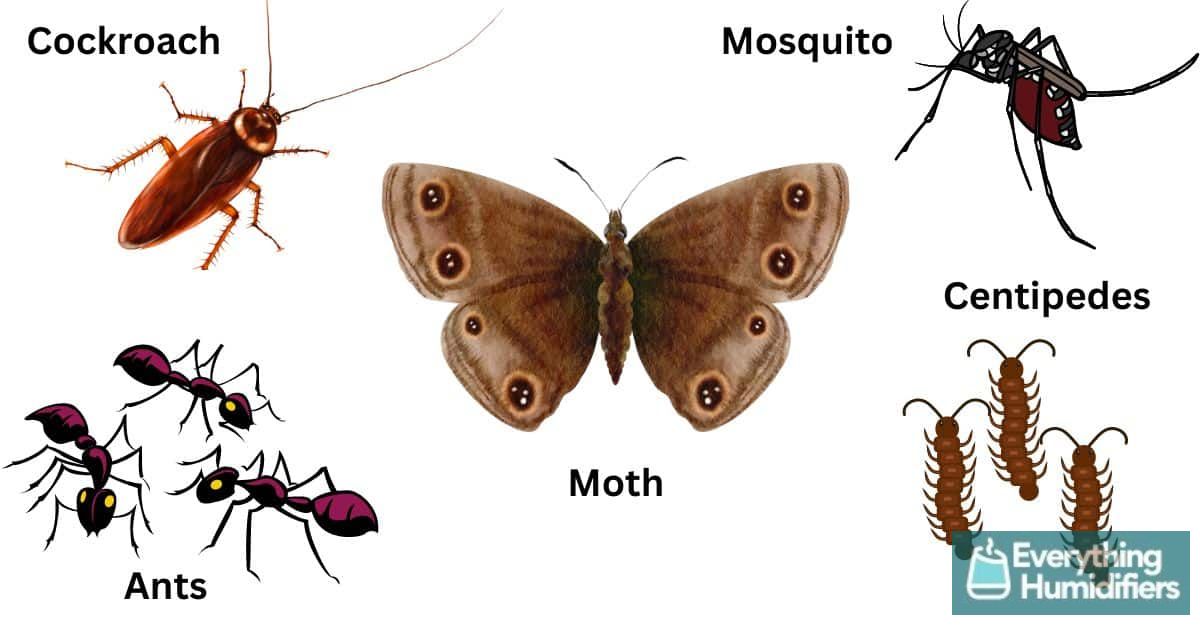
How does humidity affect insects?
Humidity plays a crucial role in the life and behavior of insects. High humidity levels can benefit insects, offering them a more favorable environment for survival and reproduction.
Insects with thin exoskeletons, like ants, tend to thrive in humid conditions as it helps prevent dehydration.
Similarly, mosquitoes and other insects that require water for breeding benefit from high humidity as it provides suitable conditions for their larvae to develop.
On the other hand, low humidity can have adverse effects on insects. It can cause desiccation or drying out, which can be lethal for many species.
Insects with thick exoskeletons, such as beetles, have better resistance to low humidity as their hard outer layer helps retain moisture.
Additionally, low humidity can reduce the availability of food sources for insects, making it harder for them to survive.
Overall, the humidity levels in an environment can significantly influence the distribution and abundance of different insect species.
What types of Insects are attracted to high humidity?
High humidity creates a perfect environment for various insects to thrive in or around our home, whether we like it or not.
If high humidity levels above 60% cannot be reduced, controlling these insect infestations as soon as possible is vital to prevent further damage and discomfort.
Here are some specific types of bugs that may be attracted to excessive humidity:
1. Ants
Carpenter ants are attracted to moist areas, seeking shelter from the heat. Moist areas can provide ants with a source of water, which is essential for their survival.
Carpenter ants, in particular, are attracted to damp wood, as it is easier for them to excavate and build their nests in soft, moist wood.
2. Bedbugs
Bedbugs thrive and reproduce faster in humidity levels between 70-80%.
However, it’s worth noting that bedbugs can survive in low-humidity environments but may become more sluggish and less active.
3. Centipedes
Centipedes require high humidity levels to survive as they are susceptible to losing moisture from their bodies. In dry environments, centipedes will become dehydrated and may eventually die.
They are commonly found in damp areas such as basements, bathrooms, crawl spaces, and other areas with high humidity. These areas offer ample moisture and often provide a consistent food source, such as other insects for these beneficial predators that consume insects such as cockroaches, spiders, and silverfish.
While house centipedes may seem creepy or unsettling to some people, they are harmless to humans and do not pose a threat.
4. Cockroaches
Cockroaches are known to be attracted to areas with high humidity levels, which can provide them with the moisture they need to survive.
Excessive moisture can create suitable conditions for cockroaches to breed and infest a space.
5. Drain flies
Drain flies are another common pest that is attracted to humid environments.
These tiny flies, also known as sewer or moth flies, thrive in damp areas such as bathroom drains, kitchen sinks, and garbage disposals.
They are often found near standing water or moist organic matter.
6. Dust mites
Thrive in environments with high humidity levels, typically between 70% and 80%. They are part of the arachnid family and are related to spiders and ticks.
Dust mites live in many homes and feed on dead skin cells. Unfortunately, they can be found in bedding, upholstery, and carpeting.
They prefer dark and damp environments, such as basements, crawl spaces, and other highly humid areas.
These pests are attracted to moist conditions, making them a common problem in homes with poor ventilation or water damage.
7. Fleas
Fleas require moisture to survive, and in environments with high humidity, they may reproduce up to 50 eggs per day, leading to a severe infestation if left uncontrolled.
Controlling moisture around your home is essential to prevent flea infestations.
8. Flies
Flies are insects that like humidity and can often be found near moist areas, such as lakes, rivers, and swamps. They breed and hide in dark and damp places, such as garbage bins, decaying organic matter, and standing water.
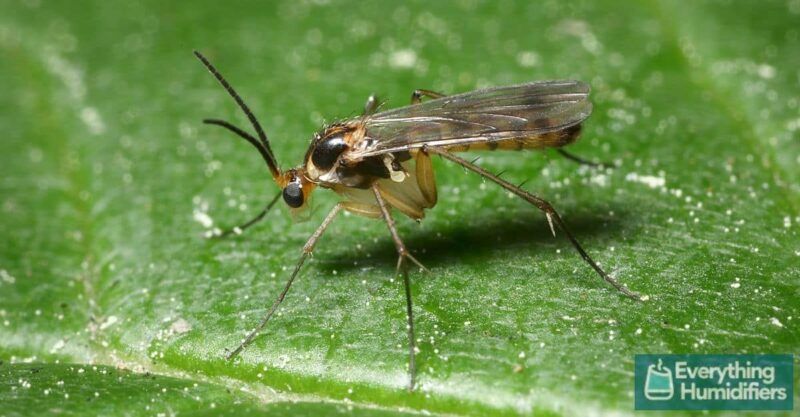
9. Fungus Gnats
These tiny flies are attracted to moist environments and are commonly found around potted plants, where excessive humidity and overwatering can create favorable conditions for their larvae to thrive.
10. Mold mites
Mold mites are tiny insects that feed on mold spores and can be found in areas with high humidity and mold growth. These mites are typically less than 1mm and are not visible to the naked eye.
Attracted to damp areas such as bathrooms, kitchens, basements, and other areas with water damage or moisture problems.
11. Mosquitos
Mosquitos breed in standing water which can accumulate in areas with high humidity. They can carry Dengue Fever which is very dangerous to humans.
Although you may be careful not to have standing water in and around your house. The surrounding areas may lure them to your home which is out of your control.
For example, where we live, there are excellent walking tracks with trees near the river, but the puddles that result from rain or higher-than-usual tides mean perfect mosquito breeding grounds.
Our condo underground parking garage 3 blocks from the river is the perfect place for them to congregate. Trust me, being a mozzie magnate is not pleasant!
12. Moths
They are drawn to the damp corners of homes, making high-humidity zones an attractive destination. They are also attracted to light sources, including porch lights and streetlights.
Moths feed on various materials, including clothing, carpets, and upholstery.
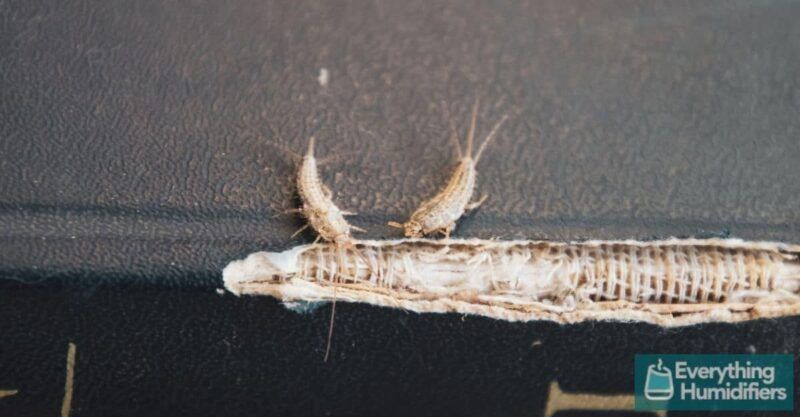
13. Silverfish
These small, wingless insects are attracted to areas with high humidity and can be commonly found in bathrooms, basements, and kitchens.
They feed on starchy materials like paper, fabric, and cardboard. Growing up in a seaside town, I remember regularly opening my treasured books to see the destruction they had caused.
14. Spiders
Some species of spiders thrive in high-humidity environments, such as cellar and house spiders. Others, like wolf spiders and jumping spiders, prefer more arid climates.

15. Springtails (Snow Fleas)
Humidity plays a significant role in the development and survival of springtails. These insects require a moist environment to thrive and reproduce.
In outdoor settings, they are typically found during the spring and winter when moisture from rain, snow, or melting ice occurs.
Springtails can become a problem in basements, bathrooms, and kitchens. They are commonly found in damp areas, such as around sinks, tubs, or leaking pipes. If there is excess moisture in a building, it can create the ideal conditions for springtails to multiply.
Springtails don’t harm humans or pets nor cause any structural damage. However, their presence indoors can be undesirable and annoying. They are known to jump and can sometimes be mistaken for fleas, hence the name “snow fleas.”
These insects are harmless and do not bite or transmit diseases.
16. Termites
Termites thrive in damp environments and are often attracted to homes with high humidity.
Causing damage to wooden structures, they can go unnoticed for months or even years before their presence is detected.
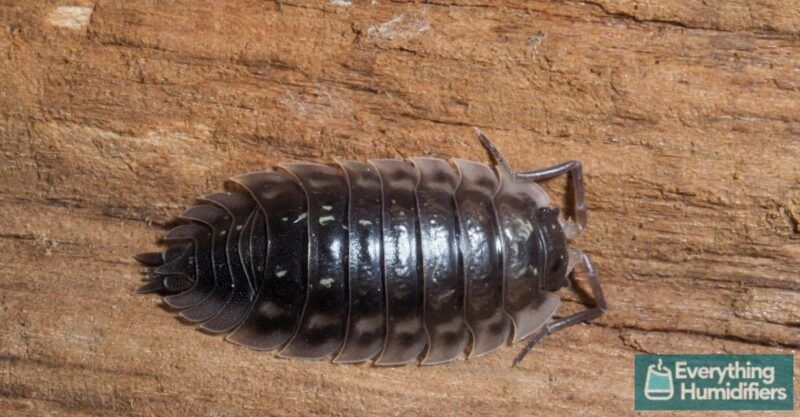
17. Woodlice (sow bugs, potato bugs, armadillo bugs)
Woodlice are moisture-loving organisms that thrive in humid environments. They are commonly found in basements, bathrooms, and kitchens. Attracted to damp and dark places where they can find moisture and organic matter to feed on.
High indoor humidity provides favorable conditions for woodlice to thrive and reproduce. It allows them to remain hydrated and facilitates the decomposition of organic matter, their primary food source.
Additionally, woodlice have specialized structures on their bodies that enable them to absorb moisture from the environment, thus making high humidity beneficial for survival.
Frequently Asked Questions
What are pests?
Pests are insects or small animals that can cause damage to your home, garden, or health. In this article, we are looking at insects specifically.
Why do pests love moisture?
Pests that love moisture thrive in environments with high levels of humidity because they need water to survive.
The damp areas of your home provide them with the perfect conditions to live and reproduce.
What are moisture bugs?
Moisture bugs, are insects that are attracted to areas of your home that are damp or have a high level of humidity.
How can I keep moisture bugs away from my home?
Reducing the moisture and humidity levels in your home is important to keep moisture bugs away.
Use a dehumidifier, fix any water leaks, ensure proper ventilation and keep your home clean and dry.
Are moisture bugs active all year round?
Moisture bugs are more active during the summer months when humidity levels are high.
However, they can still be present in your home throughout the year.
Is pest control necessary for moisture bugs?
Yes, pest control is necessary to eliminate moisture bugs and prevent them from coming back, if you are unable to prevent them yourself by reducing the moisture in your home.
A professional pest control service can help identify the source of the moisture and implement effective solutions.
Summary
Most insects listed above that prefer high humidity may not harm humans but may annoy us nonetheless.
They like a humid environment to help them live and reproduce.
In small, infrequent doses, we can manage and live in harmony with them.
However, once they get out of control and take over our homes, this can be a sign that the humidity level in your home is too high and most likely not suitable for your family or your home.
Some measures to control the situation may be needed. Using a hygrometer to find out the humidity level in your home would be a good place to start.


